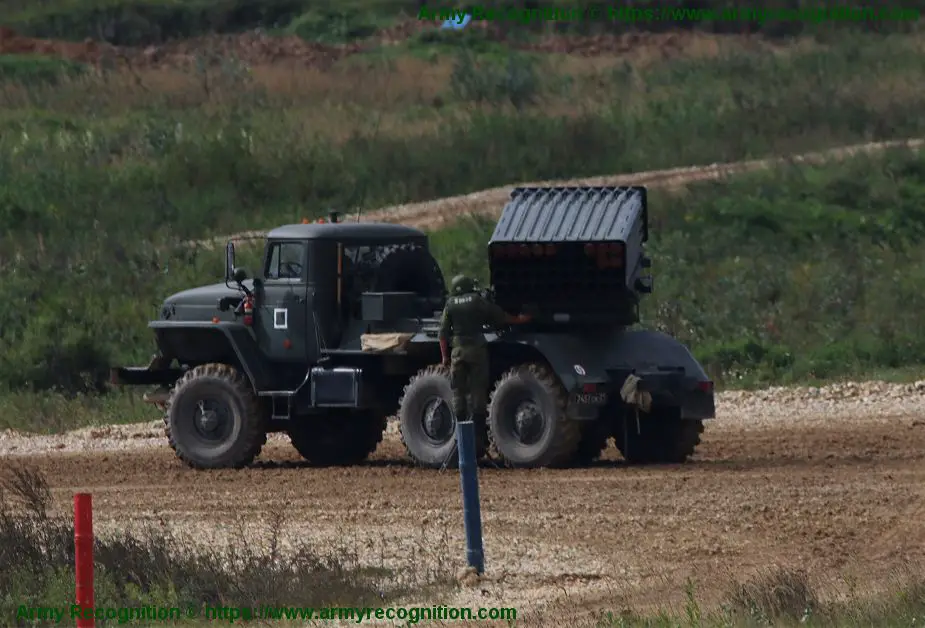Analysis: Tornado-G MLRS unprecedented characteristics in combat effectiveness
The Tornado-G 122mm multiple launch rocket system (MLRS) which replaced BM-21 Grad is operational only in the Russian armed forces at present. Its combat characteristics surpass all foreign analogues. Splav Chief Designer Boris Belobragin explained the reasons to the Zvezda broadcaster.

Russian Army Tornado-G 122mm MLRS Multiple Launch Rocket System at Army-2018 International Military Technical Forum near Moscow, Russia. (Picture source Army Recognition)
A completely new automated combat vehicle was created on Ural-4320 undercarriage. It is reliable and was tested in all combat engagement conditions. Automatic aiming and fire controls are used for the first time to provide self-orienting gyroscopic course and list reporting systems. It means a vehicle on the march knows its location at any time and can receive a mission, target coordinates and fire 20 seconds after arrival to the launch place. A completely new launch preparation system was created. The crew were cut from four to three men, as a result.
The new aiming system remotely and automatically receives information. The commander remains in the vehicle and can load the information into each of the 40 projectiles. Each shell flies to the assigned target. One can fly 20 kilometers and another 15. An inductive information device is mounted on each barrel. Each cluster projectile receives distance information. Grad had to manually fix time on the distance pipe of each projectile. Now it takes several seconds to put mission data into each shell.
The R&D created three types of projectiles to destroy various targets. Cumulative-fragmentation shells for the first time were designed to hit light armor. They strike it from the top into the most vulnerable place of any armor and can destroy any foreign hardware. One rocket-propelled projectile carries 70 submunitions. One salvo fires 40 projectiles, i.e. 2800 submunitions. A projectile with a separable warhead is used for the first time. It falls on the target vertically on a stabilizing parachute which ensures high precision hit. The projectile surpasses the existing ones from seven to 14 times. A single-block high-explosive fragmentation shell has been created with a detonator equipped with an altitude meter. It regulates the height of the explosion which can take place several meters high or upon impact with the ground. The engine of Grad missiles was powered by ballistite solid fuel. The new projectiles are powered by a solid fuel mixture which has much better characteristics than ballistite fuel. It helped halve the engine in size and increase the payload.
At present Tornado-G has no foreign analogues although many countries are designing such weapons. It surpasses all existing systems by the automation and combat effectiveness level and the ability to destroy various types of targets, Splav Chief Designer Boris Belobragin told the Zvezda broadcaster.


























